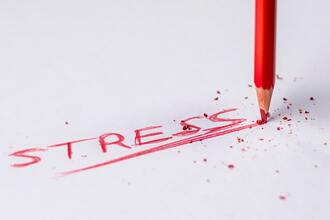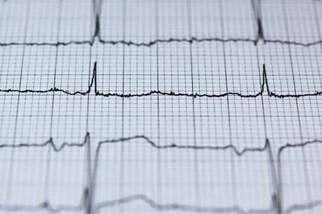 Craniosacral therapy helps to release fascial tensions with gentle techniques. There are some ways you can do this on your own. But, what is fascia? Fascia is a type of connective tissue that surrounds and supports muscles, bones, organs, and other structures in the body. When these coverings are tense, twisted, or pulled, it can cause pain and negatively affect the surrounding structures. Fascia can become tense or restricted due to various factors such as stress, injuries, poor posture, repetitive movements. Foam Rolling, Stretching, and breathwork are my favorite at-home exercises for fascial release. These at home practices can help continue any release or balancing attained during a craniosacral appointment. Foam rolling is an excellent way to lenghten fascia and release trigger points to relieve pain and increase flexibility. Once you get used to the exercises, with 15 minutes of rolling you can do a lot of good for your body. It may take some time to get used the feeling of rolling though, it does sometimes give you that "good pain" kind of discomfort. I suggest starting with a simple roller. The best roller is the roller you will use and afford. To do foam rolling, lie on the foam roller and use your body weight to apply gentle pressure while rolling over the targeted area. You can target areas such as the back, thighs, calves, and glutes to help release fascial tension and promote muscle relaxation. Stretching can help release fascial tension by elongating muscles and improving their flexibility. Incorporate gentle stretching exercises into your routine, focusing on areas that feel tight or restricted. I like to include a lot of side bends and shoulder rolls throughout the day. These can be integrated into your daily routines, like shoulder rolls while doing the dishes. Or calf stretches after each bathroom break. When you add in easy, light stretches throughout the day it can help increase energy levels, it gives you a little more get up and go energy. Did you know it is common to hold your breath when opening or sending an email? Incorporating some conscious breathing while working at the computer can be a great help with concentration and stress. Diaphragmatic breathing techniques can help relax the body, release tension, and promote fascial relaxation. Sit comfortably, inhale deeply through your nose, and then exhale slowly through your mouth while consciously relaxing your muscles. Repeat this cycle for several minutes, focusing on your breath and allowing your body to relax. Remember to always listen to your body and avoid any exercises or techniques that cause pain or discomfort. If you have any health concerns or chronic pain related to fascial tension, it's best to consult with a qualified healthcare professional or a licensed bodywork therapist for personalized recommendations and guidance. Often our habitual holding patterns and stress are so ingrained into our bodies, it is necessary to first receive craniosacral therapy in order to get the most out of these self care exercies. If doing these exercies just isn't enough to help relax those physical tensions, it could be a sign you are ready for a craniosacral appointment.
0 Comments
We have all experienced how emotions affect our breathing. We get excited and naturally take in a deep breath before saying something like "oh my!" Or if we are scared we hold our breath in.
Our emotions affect our breath. And we can use our breath to change our emotions. Our breath has a direct relationship with our nervous system and stress response. To calm ourselves with breath the easiest practice to do is to create a longer exhale breath than inhale. Simply breathe out a few seconds longer than your inhale. This works because the out breath engages the parasympathetic nervous system. It has a biological effect to calm us down and take our bodies out of a high alert, stress state of being.  Stress. We all go through it. Maybe you can't remember when you weren't stressed out. Ever feel like your body can't relax? CranioSacral Therapy can help you get out of the stress loop and feel like yourself again. CranioSacral Therapy can help you relax and recover from stress. There is a very interesting study in the Journal of the American Osteopathic Association which proves the stress reduction and nervous system balancing effects of CranioSacral Therapy (CST). This study provides some good physiological proof of the positive influence of CST on the vagus nerve, the nervous system, and the hypothalamic-pituitary-adrenocortical (HPA) axis. The HPA axis is our body’s stress response system. The HPA axis is also how the nervous system and endocrine system work together to help the body respond to stress. When the nervous system detects stress, this axis is activated, releasing cortisol and other stress hormones. When we have chronic stress, the regular release of hormones into our bodies can have negative effects on our body and mental health. This study proves CST lowers heart rate and cortisol levels.  In the study there were two groups, a control group and a group which received 20 minutes of craniosacral therapy from an osteopath. Both groups went through a stressful event, they performed math skills in front of a 3 person audience. Performing math in front of people is sure to create stress! After the math “test” one group received 20 minutes of craniosacral therapy. They tested heart rate and took saliva samples to measure cortisol levels. The group that had the craniosacral therapy, had lower cortisol and lower heart rates after the therapy. They also tested cortisol the following morning and the group that received CST still showed biomarkers for lower stress response. The participants who had CST recovered from the math stress much quicker than the group who received no treatment. CranioSacral is a gentle, nourishing therapy that can have profound influence on overall wellbeing, sleep, recovery, and a variety of medical conditions. Best of all, it is gentle and noninvasive, with little contraindications, so it can help many different people. Check out the article, Single Osteopathic Manipulative Therapy Session Dampens Acute Autonomic and Neuroendocrine Responses to Mental Stress in Healthy Male Participants Janet Crow, CSTCranioSacral Therapist and owner of Twin Cities CranioSacral. |
What is self-care?
|
What Our Clients Are Saying"Janet is an incredibly gifted healer. She does life-changing bodywork. I can’t recommend her highly enough." Facebook Recommendation |
Contact UsTwin Cities CranioSacral
Janet Crow MS, CMT, CST-T 557 West 7th Street Saint Paul, MN 55102 (612) 444-6494 [email protected] |

 RSS Feed
RSS Feed